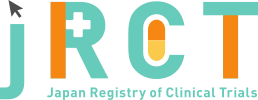臨床研究等提出・公開システム
|
Sept. 24, 2020 |
|
|
July. 03, 2024 |
|
|
jRCTb030200129 |
Clinical research for autologous-cultured epithelium sheet transplantation for vitiligo vulgaris (Autologous-cultured epithelium sheet for vitiligo vulgaris) |
|
Autologous-cultured epithelium sheet for vitiligo vulgaris (Cultured epithelium for vitiligo vulgaris) |
|
|
Nakamura Daisuke |
Mar. 04, 2024 |
|
1 |
|
50 years old, male, vitiligo vulgaris appeared approximately 7 years ago. |
|
During the period, autologous cultured epidermal cell sheets were transplanted to one case. |
|
No serious adverse events were observed during the observation period. Three months after transplantation, itching at the transplant site was observed, but this itching was associated with wound healing and became mild during the post-observation period. |
|
Primary endpoint:The number of serious adverse events was 0. Secondary endpoints:There was a slight increase in mean melanin levels at the transplant site 6 months after transplantation. |
|
One subject was transplanted with autologous cultured epidermal cell sheets and no serious adverse events were observed. The validity of the evaluation method and evaluation points of this regenerative medicine technology could be confirmed, and a certain amount of useful information could be collected for future clinical research. The transplanted cases are being followed up and will continue to be followed up. |
|
July. 03, 2024 |
|
https://jrct.mhlw.go.jp/latest-detail/jRCTb030200129 |
Nishikawa Ayaka |
||
Shonan Beauty Clinic, Shinjuku |
||
24F Shinjuku I-land Tower, 6-5-1 Nishishinjuku, Shinjuku-ku, Tokyo |
||
+81-120-5489-40 |
||
mimura@sbc.or.jp |
||
Mimura Daisuke |
||
Shonan Beauty Clinic, Shinjuku |
||
12F Shinjuku I-land tower, 6-5-1 Nishishinjuku, Shinjuku-ku,Tokyo |
||
+81-50-5865-5944 |
||
mimura@sbc.or.jp |
| 5 | ||
Interventional |
||
single arm study |
||
open(masking not used) |
||
uncontrolled control |
||
single assignment |
||
treatment purpose |
||
(1)Patients who are over 20 years old and obtain consent in writing. |
||
(1) Patients being treated for autoimmune diseases |
||
| 20age old over | ||
| No limit | ||
Both |
||
Vitiligo vulgaris |
||
Transplantation of processed (autologous-cultured epithelium sheet) cells |
||
Number of occurrences of serious adverse events |
||
Evaluate below contents, |
||
| Sept. 24, 2020 | |
| Oct. 12, 2022 | |
Complete |
| Okayama University Certified Special Committee for Regenerative Medicine | |
| 2-5-1 Shikatacho, Kita-ku, Okayama-shi, Okayama | |
+81-86-235-6503 |
|
| ouh-tokutei@adm.okayama-u.ac.jp | |
| Approval | |
July. 14, 2020 |
| なし | |
| none |
